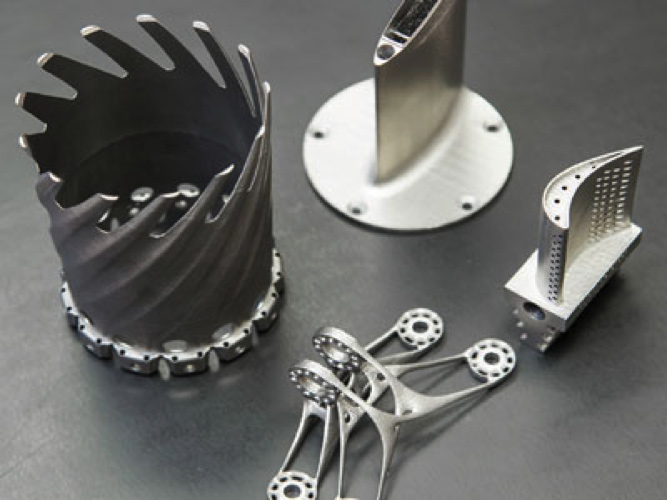
With additive manufacturing (AM) becoming an established part of many companies’ product development and manufacturing processes, there has been a growing understanding of the technology’s technical and business advantages. With that, more users at all points in the value chain are benefitting from lighter and more durable parts, increased design freedom and on-demand part production.
But that’s just scratching the surface of AM’s potential.
There’s still room for companies to maximize the technology across their entire operations, from the supply chain and production processes to potential new markets and internal expertise. In a hypercompetitive industry like manufacturing, it’s important to leverage all the tools at your disposal. 3D printing, applied correctly, can represent an important tool in the hands of manufacturers of all stripes.
Here are five signs companies aren’t fully leveraging AM—and tips on how they can change that:
With traditional manufacturing, companies typically design parts with manufacturability in mind rather than maximizing the part’s intended function. AM solves that disconnect because the technology’s build process inherently allows tough features (e.g. undercuts, conformal channels) to easily be included into designs.
Bridging the gap between an optimal part and a reasonable-to-manufacture part has been a challenge since the dawn of modern product design history. AM is closing that gap. All that’s required is a shift in design thinking to accommodate the technology’s capabilities.
To stay current, companies must recognize AM is for more than just prototyping. In fact, many companies are in production with metal 3D printing today. Used for everything from architectural modeling to medical production parts, 3D printing has solutions that can be utilized across the entire product development cycle. Each production run of a new part will need to be situated at some point along the volume/complexity curve. Once that analysis is completed, however, there is a clear subset of cases in which AM is the most economical option.
This follows from the previous step. If companies don’t use AM to build parts from prototyping to production, then they may not fully understand what applications they can serve. Of course, what applications companies use 3D printing for depends on what industry, or industries, they operate in, so it may not always be necessary to widen their scope. But for those with multiple needs (e.g. manufacturing aids, prototyping and production parts), it’s prudent to determine whether AM can benefit those areas as well. The fixed costs associated with bringing 3D printing in-house or making the time investment to build a relationship with an external AM vendor can be high. It’s just bad business not to maximize the return derived from those investments.
Just because it can be printed doesn’t mean it always should. Advanced users achieve the best of both worlds by using AM in tandem with traditional manufacturing like CNC machining and metal injection molding. Additive is a perfect solution for tooling validation, bridge production, jigs and fixtures, or low to mid-volume manufacturing. Companies can also reduce production costs and lead times by using 3D printing in various stages of the production process. The intersection of AM and conventional processes (as with 3D printed molds for injection molding, for instance) can often be the place where the greatest efficiencies are achieved.
Companies that realize AM’s full potential typically have at least one empowered champion who promotes its technical and business benefits within the organization. This individual or team can open the eyes of their coworkers in a way that feels much more immediate and tangible than any external influence. They help institute strategic initiatives that actively evaluate how to further establish AM into the company’s processes and fully leverage its benefits.
So how can companies better integrate 3D printing into their manufacturing processes? It starts with education. Businesses must understand the various technologies and the reasons to use each of them.
Companies also need to assess their infrastructure. Does your team have the equipment, designers and/or engineers to support 3D printing? For those lacking the internal knowledge and/or technical capabilities to do this, a service provider can serve as an educational partner. It’s also worth evaluating whether having in-house expertise and equipment makes sense. If your business won’t use the technology enough to maximize the capital expense, it may be more practical to outsource that work.
Finally, advanced users of 3D printing are able to articulate its benefits to a wide array of audiences, from engineers to the C-suite. Understand that both technical and business (i.e. financial) cases for 3D printing must be made. An internal champion dedicated to the cause can be a point person for this.
Are you up to the challenge?
 Matt Sand
Matt Sand
Matt Sand is the President of 3DEO (www.3DEO.co), an innovative metal 3D printing company based in Los Angeles. 3DEO is the go-to supplier of low-cost metal 3D printed serial production components. Leveraging its proprietary technology, 3DEO competes head-to-head with conventional manufacturing in terms of quality, cost, and turnaround time.
Prior to 3DEO, he worked as a venture capitalist and operating entrepreneur. He has founded several startups in a wide range of industries, from healthcare to high-technology. Matt is proud to have served as an officer in the U.S. Air Force. He holds bachelor’s degrees in computer science, Mathematics, and Political Science from Tulane University, and an MBA from UCLA Anderson.
From tradition to transformation Sequoia Brass & Copper has stood for excellence in American manufacturing. In this episode, we sit down with Kim MacFarlane, President of Sequoia Brass & Copper, to hear the inspiring story of a family-owned company founded by her father, built on craftsmanship, trust, and a relentless commitment to quality. Kim shares how she’s guided the company through the challenges of modern industry while honoring its heritage, and how the next chapter will be carried forward by her son Kyle. This is more than a story of brass and copper; it’s about resilience, innovation, and the enduring strength of family legacy. If you’ve ever wondered how tradition can meet the demands of today’s industry hit play and be inspired.